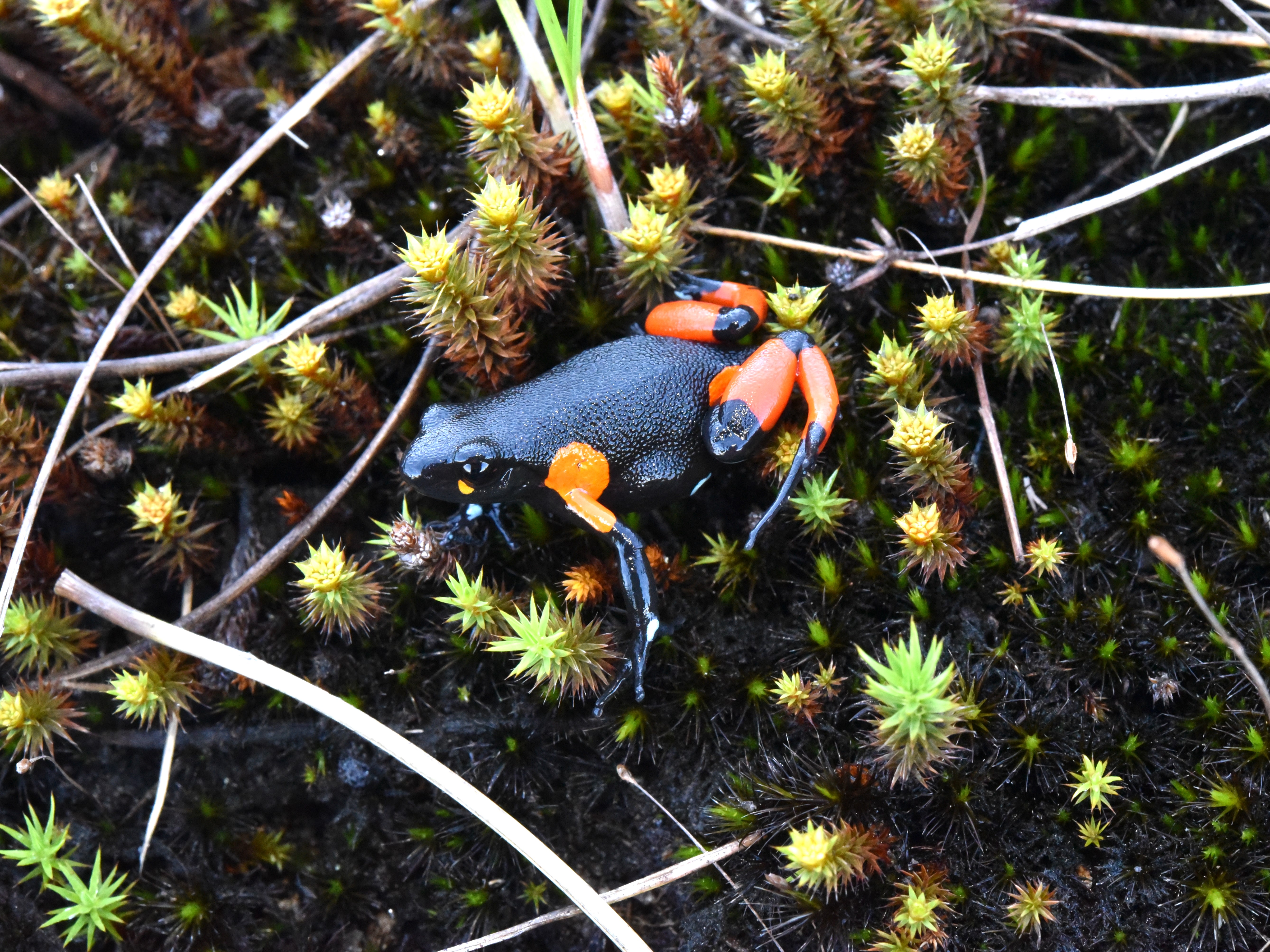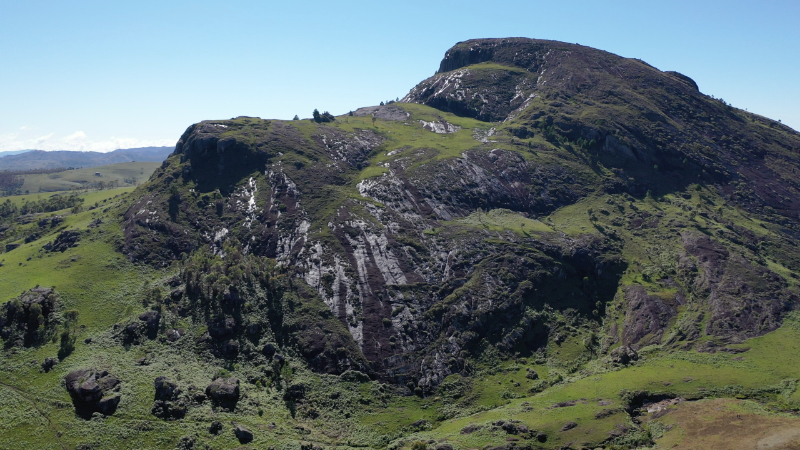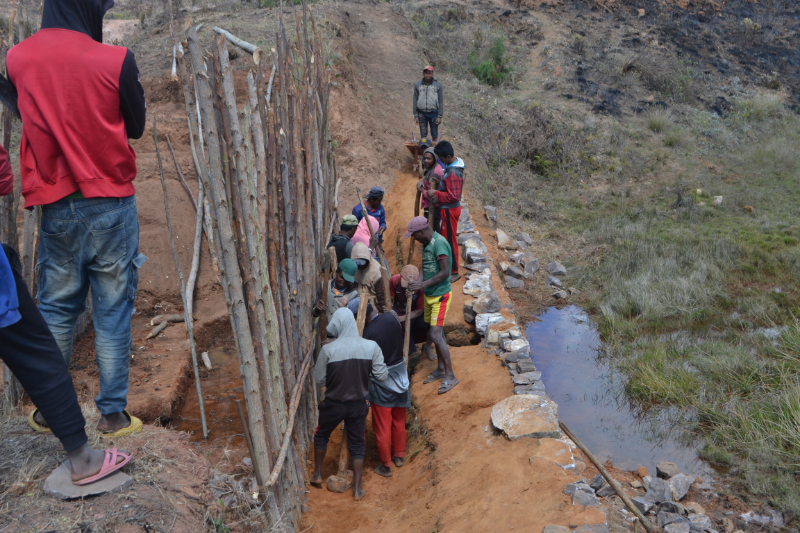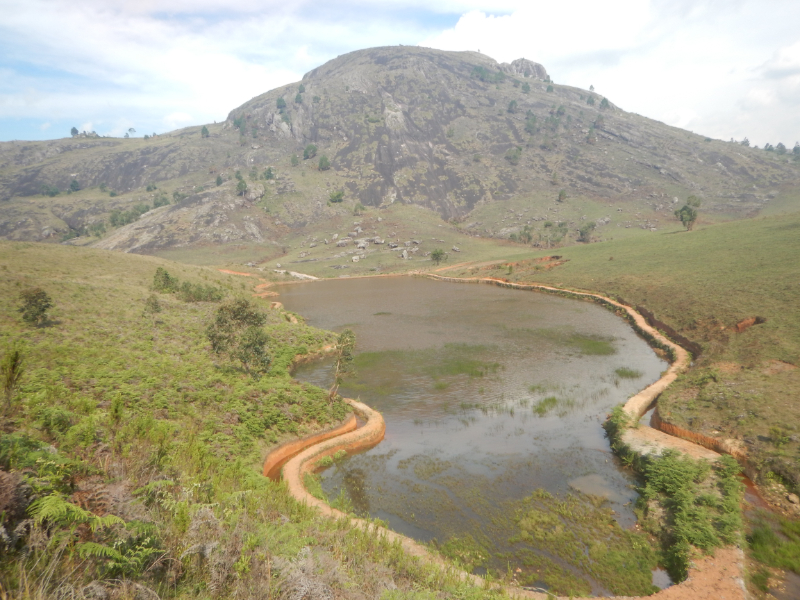Conserving amphibians of Madagascar

Adult Harlequin mantella, Mantella cowanii, on natural habitat of Fohisokina hills. Credit - Gerardo Garcia.
A Conservation strategy for the amphibians of Madagascar
The Harlequin mantella or Mantella cowanii is an Endangered amphibian species, restricted to a handful of sites in Madagascar’s central highlands. The species’ range is fragmented across four sites, with large stretches of unsuitable habitat between them and each of these sites are further subdivided into smaller populations, again with little or no gene flow between them. Previously assessed as Critically Endangered due to volumes of collection for the pet trade, M. cowanii was downlisted to Endangered in 2014, as trade in the species had subsided. However, the quality of the species’ habitat has continued to decline, and the species is now increasingly threatened by climate change; seasonal rainfall patterns are being disrupted, fires are more frequent, and the closely-related Baron’s mantella (Mantella baroni) is shifting upslope and is now hybridising with M. cowanii in at least one location. Relatively little is actually known of the species’ reproductive biology and ecology, as the frogs are only observed during a small part of the year (a very rare behaviour in this genus of frogs), and the region they are restricted to is remote with difficult, rocky terrain.

Madagasikara Voakajy (MV) is a Malagasy biodiversity organisation dedicated to the conservation of endemic vertebrates and their habitats in Madagascar. MV, along with several partner organisations, including Chester Zoo, have previously been involved in the conservation efforts for the closely-related Golden mantella (Mantella aurantiaca) and its habitat in the Mangabe Reserve, so had valuable experience they could apply to this species and its threats. Rodlis Raphali Andriantsimanarilafy is MV’s species and conservation programme manager, who, with support from MV, Chester Zoo, and Durrell Institute of Conservation and Ecology (DICE) at the University of Kent carried out PhD-level research into the species’ current status, ecology and modelled distribution under climate change, and gained the skills to become a leader of in-situ and ex-situ conservation planning for amphibians in Madagascar. This research had previously been identified as a priority within ‘a conservation strategy for the amphibians of Madagascar’, as well as in an Action Plan 2020-25 specifically for M. cowanii. The project was also carried out in liaison with Devin Edmonds (University of Illinois) who is carrying out parallel research on the population biology of the species.
During the period of the fellowship, Raphali undertook extensive fieldwork, conducting regular surveys at a known locality of the species, consisting of visual encounter surveys as well as listening out for the male frogs’ calls. The sex of any frogs encountered was recorded, as well as the habitat they were encountered in. Raphali’s PhD work also involved modelling future climate scenarios, and seeing how much of the species’ range remained suitable into the future with projections of how the area’s climate was likely to change. While undertaking these studies, Raphali also made two visits to the UK for additional training. This included attending a postgraduate module on ‘Multidisciplinary perspectives in conservation’ at DICE, meeting with the team at Chester Zoo to discuss the design of future facilities for the ex-situ research programme to complement the species’ natural history and feasibility of a breeding programme for reintroduction, attending and networking at a meeting of the British Herpetological Society, and completing a drone piloting course, with the aim of learning how to safely fly a drone in order to overcome the difficulties of the terrain to more effectively study the spatial distribution of the frogs and survey potential additional sites for M. cowanii.
The fellowship culminated in Raphali receiving his PhD in March 2024. His research confirmed that M. cowanii spends only a small part of the year above ground, possibly retreating into rock crevices and underground pools outside its brief breeding season when the rains return, and these underground pools may also be where the species breeds. The frogs were also found more often on the surface in grassy patches at night, suggesting they may be more nocturnal than related mantella species or have adapted to a degraded habitat without vegetation cover to protect during the day. The conditions found to have the greatest impact on whether or not frogs were present at a location were annual average temperature and amount of winter rainfall.

Climate modelling painted a dire picture, with predictions that most of the species’ range would be unsuitable within 30 years, with the frog likely to become restricted to only the highest elevation sites of those where it is currently found. However, the PhD research also highlighted that there are several sites that seem suitable for the species outside the currently known locations, and these should be surveyed fully in order to ensure there are no overlooked populations of M. cowanii present at any of them. It was also promising that the sex ratio of frogs seen and heard was roughly 1:1 across all sites, suggesting that populations will still be able to reproduce normally. Raphali’s PhD concluded with the recommendation that a captive breeding programme be established for this species to enable further research that has proved difficult in its remote habitat and with the species’ secretive behaviour. It would also allow a full description of the species’ reproductive cycle and to act as a safety net population in the face of the climate-driven threats faced by these unique frogs. Important steps towards the establishment of this ex-situ population of M. cowanii have been taken over the course of this fellowship.
Overall, this project has enabled the collection of crucial information on this highly threatened and unique amphibian species, in order to direct the next steps in its conservation. The skills gained by Raphali during his PhD will enable him to champion this work going forwards, and also enable conservation work on other highly threatened Malagasy species. Félicitations Raphali!
Written by Rodlis Raphali, Gerardo Garcia, and Kieran Richardson. For more information on this Darwin Initiative Fellowship project DARFW053, led by Chester Zoo, please click here



 Back
Back